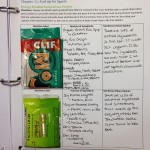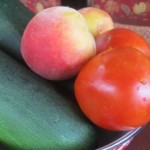At the beginning of this school year, at an in-service program, we were asked by our administrators to do three things within our respective curriculums. One: Implement more projects. Two: Use more technology. Three: Become more multi-disciplined. With that being said I…
Tag: High School
Healthy Living Infographic

Tired of posters or PowerPoint presentations? This activity allows students to create their own infographic based on statistics and facts found on the Centers for Disease Control. An infographic is a visual way to represent facts and information. There are a few free sites that have templates to create infographics quickly. This mini project allows students to practice using data and creating graphs.
Prenatal Nutrition
Eating healthy is always important but especially when you are expecting a child! As a pregnant mom you are your child’s lifeline to good health and nutrition. So remember if you eat junk so does your developing baby, but if…
Sensory Play
From birth children begin to learn about their world through their senses. Research even tells us that sensory play contributes to brain development. This lesson focuses on why caregivers need to provide sensory rich environments for children and challenges students…
Quesadillas: A Nutrient Dense Mixed Food Lesson & Lab
When teaching about the food groups in MyPlate I find it’s also important to explain the concepts of mixed foods, empty calories and nutrient dense foods. Junior high students are often confused as to what these terms actually mean. After…
Decision Making Lesson & Group Activity
For years I struggled with how to teach decision making more interactively. I wanted students to know and understand the process and be able to apply it to important decisions in their lives, but I also wanted an activity where students…
Timetoast Timeline Technology
Timetoast.com is an easy to use and free web technology that allows your students to create interactive timelines for historical data, life events, stories and research projects. There are many opportunities to use it in the Family and Consumer Science classroom.
Energy Bar Comparison

With the plethora of sports enhancing food items available, how does one know what to choose? Student athletes often use performance enhancing food products and often don’t know what they are really eating. This lesson helps students think critically about what performance enhancing products contain and their true nutritional value.
Creativity & Play The Dr. Seuss Way
As soon as my students see the cans of Play-doh sitting out they get excited! Common questions are “Is that for us?” or “Do we get to play with that today?” And why not? As a child I enjoyed creating things out of Play-doh and still do today. Play-doh is fun and creative! I also enjoy Dr. Seuss books for the same reason. So why not combine the two? When we teach our students about children and the importance of literacy and play, I think it’s only fair to include the importance of creativity and imagination. This interactive lesson strives to connect the areas of development with creative play in a way that, I hope, would honor Dr. Seuss!
Promoting Whole Foods

When it comes to my food, I like to keep it REAL! Growing up real foods came from the garden and fruit trees we grew, harvested and preserved. Real muffins, cookies, and desserts were made from the eggs we gathered daily from our backyard chickens and real meats came from the wild game my father hunted and fished for. Home cooked meals were prepared by my mother and were made with real foods with ingredients I actually knew and could pronounce. Sadly, the majority of my students don’t know what it means to eat real. All they know is the pre-packaged, easy to make foods known as processed. This lesson explains the differences between the whole, real foods I know and the processed foods they know and hopefully gives them “food for thought” when it comes to making REAL changes in their eating habits.
